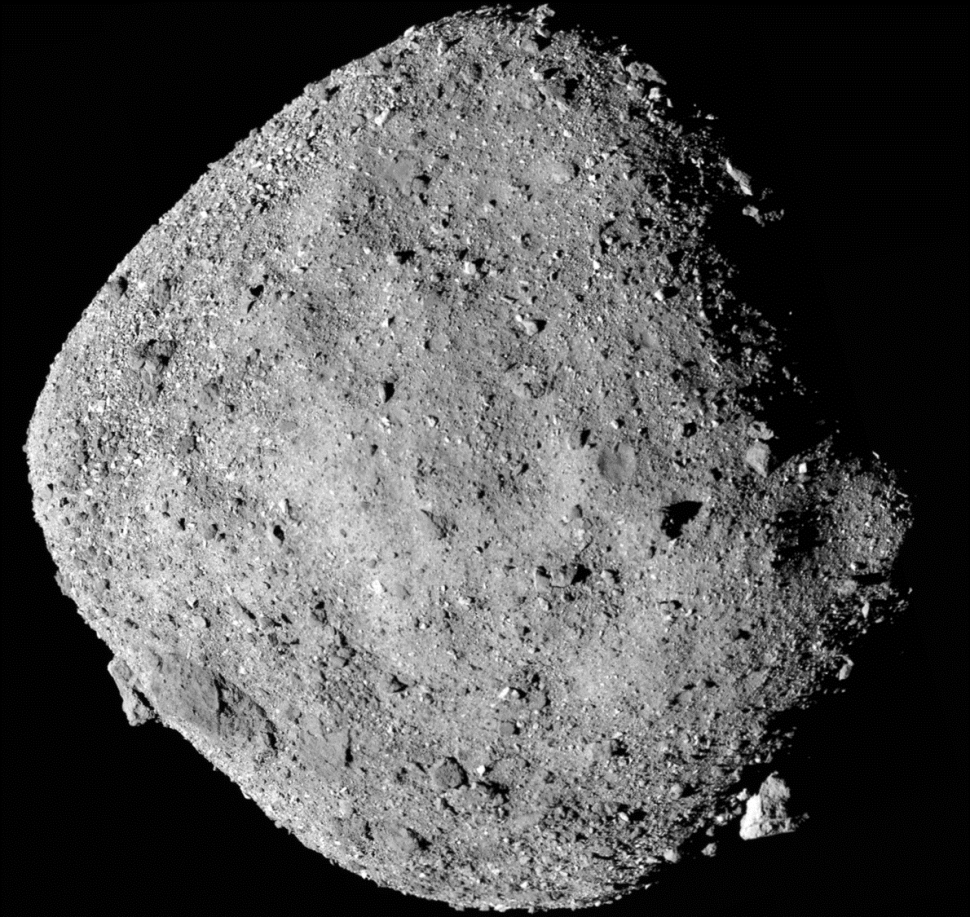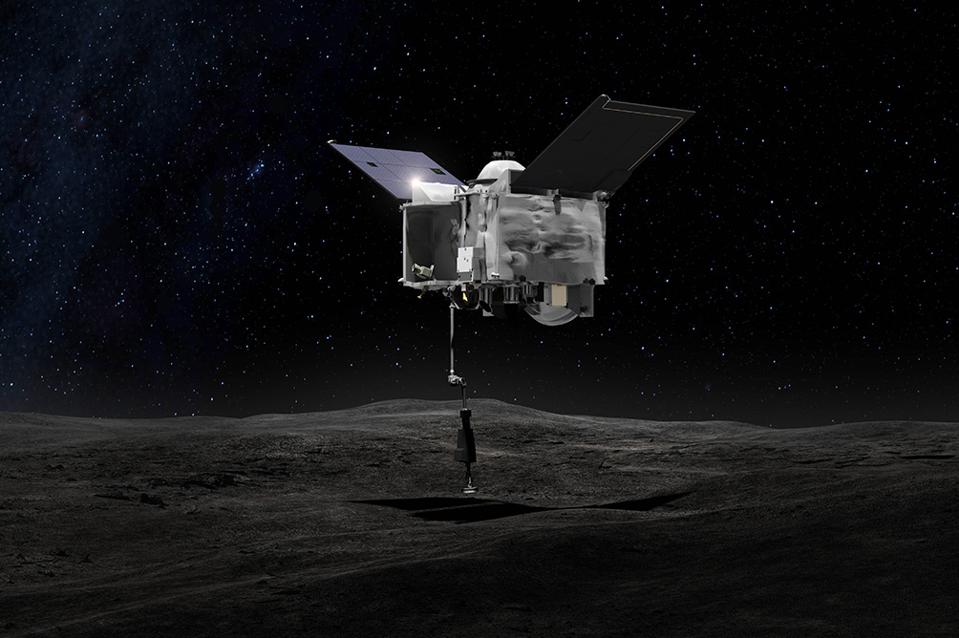It could take about 10 days to judge the success of today’s epic maneuver. For the first time ever, a NASA probe has performed a sample-snagging operation on an asteroid in deep space.
Written content from Mike Wall via Space
he agency’s OSIRIS-REx spacecraft spiraled down to the surface of the near-Earth asteroid Bennu this afternoon (Oct. 20) to grab material that mission team members hope harbors clues about the solar system’s early days and the rise of life on Earth.
“We did it!” OSIRIS-REx principal investigator Dante Lauretta, of the University of Arizona, said during a webcast that provided updates about today’s maneuver. “We tagged the surface of the asteroid, and it’s up to Bennu now to see how the event went.”
The goal was to collect at least 60 grams (2.1 ounces) of dirt and gravel from Bennu’s rubbly surface. It could take up to 10 days to determine if OSIRIS-REx achieved this aim, mission team members have said. And it’s not a disaster if the asteroid haul turns out to be a little light; the probe can go back down for two more tries if need be.

Lauretta and his fellow OSIRIS-REx scientists and engineers watched over today’s asteroid sample-snatching attempt from a mission operations center at Lockheed Martin Space in Littleton, Colorado. (Lockheed Martin built the spacecraft for NASA.) And while the mood was certainly jubilant, the impact of the ongoing COVID-19 pandemic was clear.
For example, everyone wore facemasks and maintained appropriate social distancing for much of the event. While there were some hugs after news of OSIRIS-REx’s asteroid touchdown, they were few in NASA’s live webcast, with hand sanitizer clearly on hand after such celebrations.
“This is one of those moments where we’re all aware of COVID-19,” NASA astronomer Michelle Thaller of the Goddard Space Flight Center said in the webcast just after touchdown. “Because I want the hugs and the high fives and everything, but we’re all going to keep each other safe.”
The $800 million OSIRIS-REx mission launched in September 2016 and arrived at the 1,640-foot-wide (500 meters) Bennu in December 2018. The probe has been taking the asteroid’s measure ever since, mapping its surface in incredible detail to prepare for today’s maneuver.
That work has revealed a world far more rugged than the mission team had expected. House-sized boulders stud Bennu’s surface, limiting the available options for a safe sample grab. The team eventually homed in on a small crater called Nightingale as its top choice, because the site sports relatively fresh and fine-grained material that hasn’t been exposed to the harsh deep-space environment for long. Read more from Space





